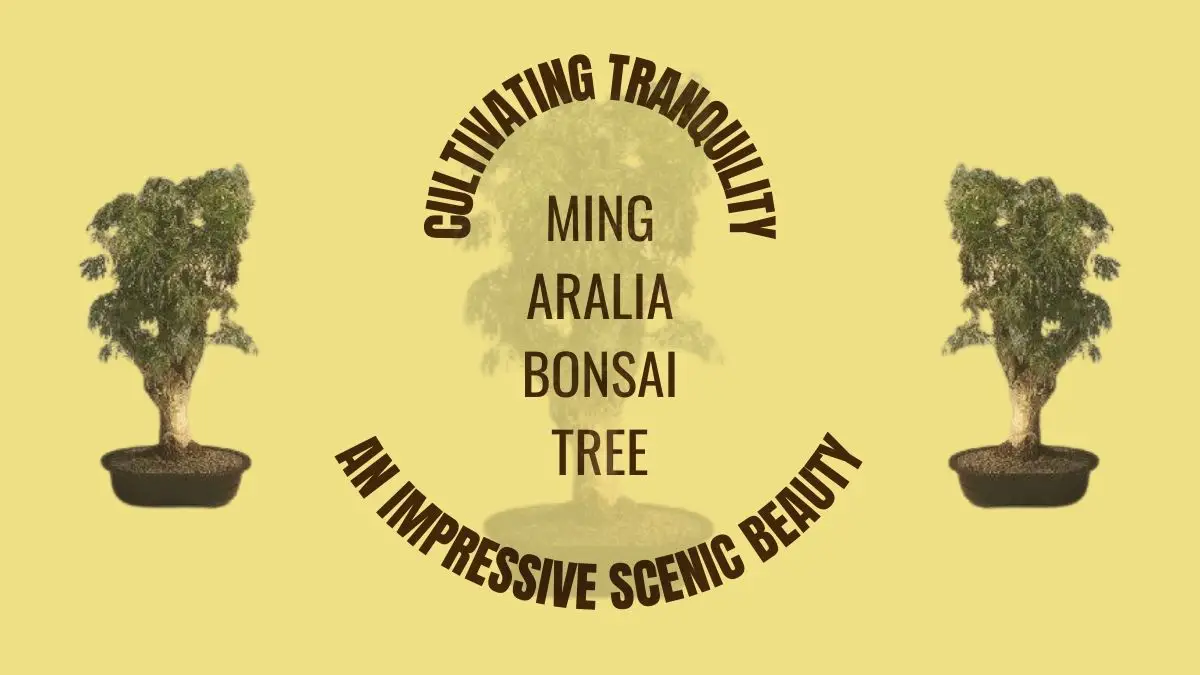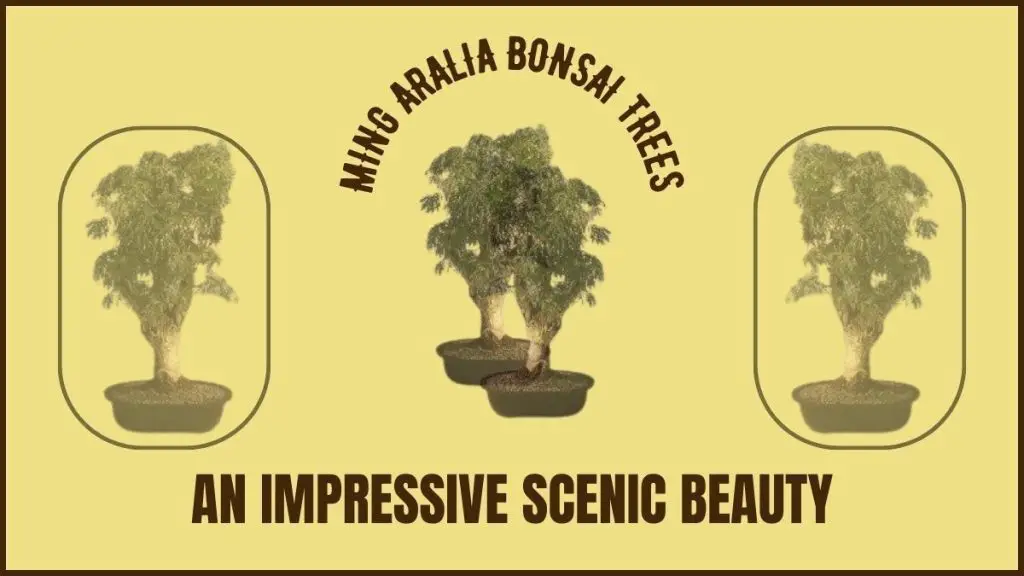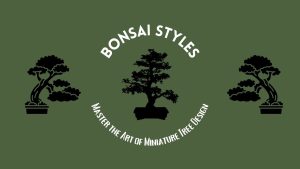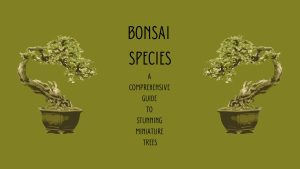
Welcome to the enchanting world of Ming Aralia Bonsai trees – where tiny wonders bring big doses of tranquility and charm into your life! If you’ve ever found yourself captivated by the art of bonsai cultivation, the Ming Aralia is like poetry in greenery. With its dainty leaves and graceful branches, this tropical gem has become a favorite among bonsai enthusiasts, both novice and seasoned.
Picture this: a living masterpiece on your windowsill, bringing a touch of nature’s elegance into your home. Ming Aralia Bonsai trees are known as a scenic beauty and they’re here to turn your living space into a haven of serenity.
In this journey through the Ming Aralia Bonsai universe, we’ll unravel the secrets of these delightful miniature trees. From choosing the perfect plant buddy to the art of shaping and pruning, we’ll guide you through the steps to nurture your very own pocket-sized arboreal companion. So, whether you’re a green-thumbed guru or just starting your bonsai adventure, let’s dive into the world of Ming Aralia – where every leaf tells a story, and every branch whispers tranquility.
Related Article: The Art of Bonsai: Making of Stunning Miniature Trees
You may also read: Are Bonsai Trees Hard to Take Care of? Debunking Myths

Related Article: The Fascinating World of Acacia Bonsai Tree
You may also read: Bonsai For Beginners: How To Grow Bonsai Tree
The Art of Ming Aralia Bonsai with Details
Here, we will talk about the details of an impressive scenic beauty known as Ming Aralia Bonsai, which would be exploring guide to all bonsai lovers.
The Origin of Ming Aralia Bonsai
Originating from the Pacific Islands, Southeast Asia, and Australia, the Ming Aralia is a tropical plant that belongs to the Araliaceae family. Its botanical name, Polyscias fruticosa, refers to its multiple stems and shrub-like growth habit. Indeed, Ming Aralia trees are renowned for their small, glossy leaves, delicate branching, and tolerance to indoor conditions.
The Ming Aralia gained popularity as a bonsai species due to its adaptability to various environments and its forgiving nature in terms of care. Its naturally elegant appearance makes it an ideal choice for both beginners and seasoned bonsai enthusiasts.
Exploring the Ming Aralia Bonsai Palette
- Leaf Varieties:
One of the distinctive features of the Ming Aralia is its variety of leaf shapes, sizes, and colors. From small and glossy to larger, deeply serrated leaves, the Ming Aralia offers a diverse palette for bonsai enthusiasts. Indeed, this diversity allows for creative expression in the overall design of your miniature masterpiece.
- Indoor Versatility:
Unlike many bonsai species, it adapts well to indoor environments, making it an excellent choice for those who may not have access to outdoor gardening spaces. Its ability to thrive in lower light conditions makes it a versatile companion for homes, offices, or apartments.
- Seasonal Changes:
Observing the seasonal changes in your Ming Aralia is a delightful aspect of bonsai cultivation. The tree may exhibit different growth patterns, leaf colors, and even blossoms during specific seasons. These cyclical changes add an extra layer of charm and connection with the natural world.
- Container Selection:
The choice of a suitable container is pivotal in the this bonsai journey. Choose a pot that complements the tree’s aesthetic and allows for proper drainage. The container serves not just as a vessel but as a frame for your living artwork, enhancing the overall visual appeal.
- Patience and Mindfulness:
Ming Aralia Bonsai’s cultivation is a lesson in patience and mindfulness. The slow, deliberate process of shaping and caring for your bonsai encourages a mindful connection with nature. As you watch your tree grow and evolve, you’ll develop a deep appreciation for the beauty in the simplicity of each moment.
Cultivating Ming Aralia Bonsai
- Choosing the Right Tree:
Selecting a healthy Ming Aralia is crucial for successful cultivation. Look for a tree with a well-developed trunk, balanced branches, and vibrant green leaves. Younger plants are often preferred for bonsai training, as they are more flexible and responsive to shaping.
- Potting and Soil:
This Bonsai trees thrive in well-draining soil. A mixture of bonsai soil, perlite, and bark is suitable for promoting healthy root development. Ensure that the pot has drainage holes to prevent waterlogging.
- Light and Temperature:
Ming Aralia prefers bright, indirect light. Place the bonsai near a window with filtered sunlight. Maintain a consistent temperature between 60-75°F (15-24°C). Protect the tree from drafts and sudden temperature fluctuations.
- Watering and Humidity:
Keep the soil evenly moist but not waterlogged. Water the bonsai when the topsoil feels slightly dry. Ming Aralia appreciates higher humidity levels, so misting the leaves regularly or placing a humidity tray nearby can be beneficial.
- Pruning and Shaping:
Regular pruning is essential for maintaining the desired shape of the Ming Aralia Bonsai. Pinch back new growth to encourage branching and shape the tree as it matures. Wiring can also be used to guide the branches into the desired positions.
- Fertilizing:
Feed the Ming Aralia with a balanced, water-soluble fertilizer during the growing season (spring and summer). Reduce or stop fertilizing in the fall and winter when the tree enters a period of dormancy.
The Meditative Art of Ming Aralia Bonsai
Caring for a Ming Aralia goes beyond horticulture; it is a meditative practice that requires patience and a deep connection with nature. As you nurture your bonsai, you learn to appreciate the delicate balance of life, the importance of mindfulness, and the beauty of simplicity.
The process of shaping and pruning a Ming Aralia is an artistic endeavor, allowing enthusiasts to express their creativity while respecting the natural growth patterns of the tree. The subtle curves of the branches and the harmony of the leaves contribute to the overall aesthetic appeal, creating a living work of art that evolves.
In the hustle and bustle of modern life, tending to a Ming Aralia provides a therapeutic escape, promoting relaxation and mindfulness. The subtle changes in the tree’s appearance and the rhythmic routine of care create a sense of tranquility, fostering a deep connection between the caretaker and the miniature masterpiece.
Nurturing Ming Aralia Bonsai: Tips and Tricks
- Dormancy Period:
Ming Aralia experiences a period of dormancy during the winter months. Adjust your care routine during this time, reducing watering and refraining from fertilizing. This mimics the tree’s natural growth cycle and ensures its overall health.
- Pest Management:
Watch for common pests such as spider mites and scale insects. Regularly inspect your Ming Aralia Bonsai to catch any potential issues early. Neem oil or insecticidal soap can be used as an organic solution to keep your bonsai pest-free.
- Root Pruning:
Periodic root pruning is essential for maintaining a healthy root system. During repotting, trim the roots to prevent overcrowding and promote new growth. Be cautious not to remove more than one-third of the root mass to avoid stressing the tree.
By incorporating these points into your Ming Aralia Bonsai journey, you’ll not only cultivate a stunning miniature tree but also embark on a fulfilling and mindful exploration of the art of bonsai. Each leaf, each season, and each step in the process contributes to the evolving narrative of your living masterpiece. Happy bonsai cultivating!
To know more about Ming Aralia, Go Here>>
Related Article: The Top 10 Best Bonsai Trees for Beginners
You may also read: Best Bonsai Pots: Elevate Your Miniature Trees with Style
Conclusion
Ming Aralia Bonsai trees embody the essence of bonsai artistry, combining nature, aesthetics, and mindful cultivation. As you embark on the journey of nurturing and shaping your Ming Aralia, you not only cultivate a stunning miniature tree but also discover a pathway to inner peace and serenity. The art of Ming Aralia Bonsai is a timeless pursuit, inviting enthusiasts to find solace and beauty in the miniature landscapes they create.
Related Article: 14 Best Bonsai Tools To Make A Proper Bonsai
You may also read: The 7 Best Bonsai Watering Cans Effective For Nurturing Bonsai
- Bonsai Styles: Master the Art of Miniature Tree Design - August 19, 2024
- Bonsai Species: A Comprehensive Guide to Stunning Miniature Trees - August 12, 2024
- Bonsai Pruning Techniques: Master the Art of Miniature Trees - August 9, 2024





5 thoughts on “Ming Aralia Bonsai Trees: A Unique Addition to Your Garden”